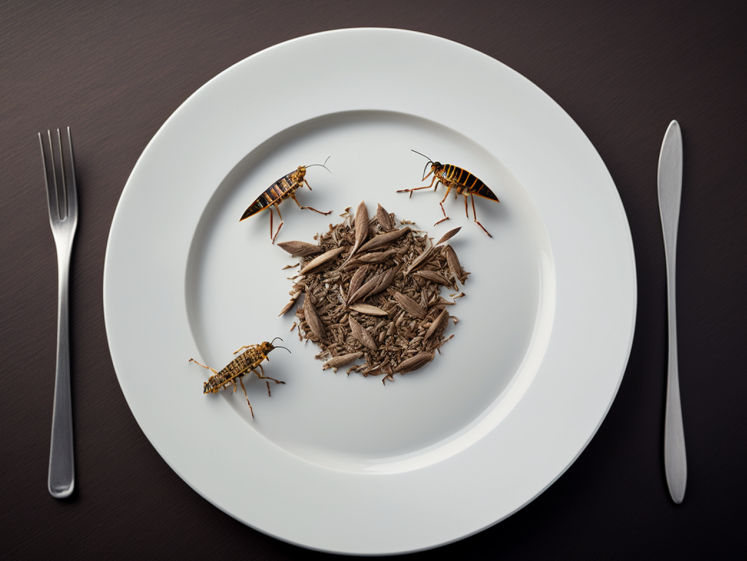Clear rules for insects as food
Comprehensive safety assessment prior to approval - labeling mandatory
Advertisement
For some time now, insects have also been legally allowed to be offered as food in the European Union. The prerequisite: As novel foods, they must - in contrast to conventional foods - have been approved in advance by the European Commission. This approval is also tied to clear labeling requirements, according to the German Federal Office of consumer protection and food safety (BVL) on the occasion of World Consumer Day (March 15).
Unlike in other parts of the world, insects are not yet part of the usual diet in Europe. They are considered novel foods in the EU and must be approved under the so-called Novel Food Regulation. Manufacturers must submit an application for approval for each individual insect and provide scientific data. On this basis, their safety to health is tested before insects are marketed as food.
So far, four insect species have been approved as food in the EU:

Computer generated picture
- Larva of the flour beetle (Tenebrio molitor) - also called mealworm.
- Migratory locust (Locusta migratoria)
- House cricket (Acheta domesticus)
- larvae of the grain mold beetle (Alphitobius diaperinus) - also called buffalo worm
Indication of possible allergic reaction
For foods containing these insects, the list of ingredients on the label must state which insect species is involved. In addition, it must be stated that this ingredient may cause allergic reactions in people who are allergic to crustaceans, dust mites or mollusks, if applicable. In addition, the approval process establishes criteria for safe processing of the insects. Insects are also included in the National Residue Control Plan, which systematically screens foods of animal origin for residues of undesirable substances. Regulations for the import of insects for human consumption from outside the EU have also been established.
Note: This article has been translated using a computer system without human intervention. LUMITOS offers these automatic translations to present a wider range of current news. Since this article has been translated with automatic translation, it is possible that it contains errors in vocabulary, syntax or grammar. The original article in German can be found here.
Other news from the department business & finance
Most read news
More news from our other portals
See the theme worlds for related content
Topic world Food safety
Food safety is at the heart of the food and beverage industry. It ensures that the food we eat every day is not only nutritious, but also free of harmful contaminants. From field to plate, the industry monitors and regulates every step of the process with strict quality controls, advanced testing methods and continuous research.

Topic world Food safety
Food safety is at the heart of the food and beverage industry. It ensures that the food we eat every day is not only nutritious, but also free of harmful contaminants. From field to plate, the industry monitors and regulates every step of the process with strict quality controls, advanced testing methods and continuous research.





























































